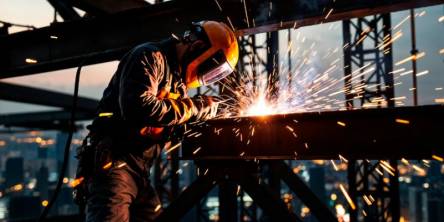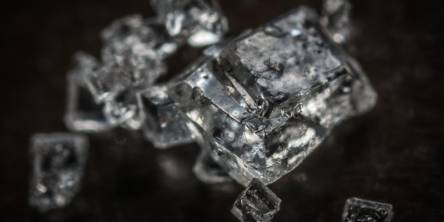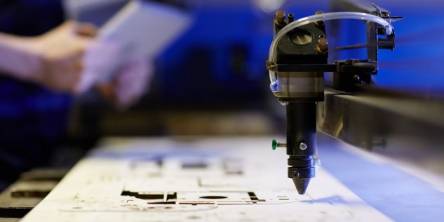Ceramic- Most Commonly Used Material in Daily Life
The most important periods of civilization, such as the Bronze Age and Stone Age were named after the materials that subjugated them. It seems surprising that there has never been a ‘Ceramic Age’. However, it will not be wrong to say that the modern age is as much a ceramics age as any other. Previously, Ceramics referred entirely to pottery and articles made by heating materials obtained from Earth’s crust. Nowadays, the word ‘Ceramic’ has a much broader description. Ceramics are commonly known as nonmetallic and inorganic solids with a variety of useful properties. These properties include very high strength & hardness, very high melting points, thermal insulation, and good electrical properties.
Some well-known ceramics are glass, pottery, brick, cement, and porcelain. At one side of the scale, ceramics consist of normal materials such as diamond and graphite, prepared from diverse crystalline arrangements of the Carbon element. But on the other end of the scale, intricate crystals of barium, yttrium, oxygen, and copper create advanced ceramics. These complex types of ceramic are used in high-temperature superconductors. The majority of ceramic objects fall under these extreme ends. Some of the advanced ceramic materials are combinations of other materials and ceramics called as CMCs (ceramic matrix composites). The crystalline compounds and metal oxides are made up of oxygen and carbon. Thermal conductivity ceramics such as borides, carbides, silicides, and nitrides, are made from boron, nitrogen, and silicon.
Useful Properties of ceramics Material:
Ceramics are best known as fragile solids mainly suited for bearing high temperatures. The various materials used in manufacturing ceramic objects give them a wide range of properties. The common properties of ceramics comprise strength, robustness, fragility, high thermal and electrical resistance. They also have the ability to endure the destructive effects of oxygen, acids, and additional chemicals because of their inertness. However not every ceramic behaves in the same way. For instance, graphite conducts electricity very well and is a very soft ceramic; on the other hand, diamond is an excellent conductor of heat. Ferrites are mostly good conductors of electricity and their superconductors have approximately no electrical resistance.
CMCs (Ceramic matrix composites) are manufactured by embedding fibers of a strengthening matter known as a ceramic matrix. These materials are not at all brittle. The properties of a thermal conductivity ceramic depend not only on the materials from which it is manufactured but also on its crystalline structure. Diamond is tough and strong because all of its carbon atoms are bonded tightly to each other.
Graphite shears it is very soft and made up of various layers. Although the carbon atoms are tightly bonded within a given layer, the different layers are held together by much weaker bonds. Kaolin (also known as China clay) behaves in the same way as graphite, with its essential elements silicon, aluminum, oxygen, and hydrogen atoms strongly bonded into smooth sheets. Although, the weak bonds are connecting the sheets are easily broken down when water surrounds them and it is the reason, which makes wet clay so easy to shape, and mold.
The manufacturing process of ceramics:
Earlier ceramics were made by the traditional method of Firing. ‘Ceramic’ word can be traced back to a Sanskrit word meaning ‘to burn’. Common ceramics such as bricks and glasses are still made by ancient procedures. Just like ancient times, today's pottery is also made by digging clay from the ground and then mixing it with water to make it supple and elastic. They are shaped by using a wheel or a mold and then firing them in a furnace. Some of today's methods are more complicated than the techniques of ancient times.
Specialized machines are used in processes such as jiggering (laying the material repeatedly into a revolving mold), Extrusion (forcing material into a figure by squeezing it like toothpaste during a shaped tool), or hot pressing (forcing a powdered form of the ceramic into a mold then heating it and pressing it to fuse the material into shape). Therefore, the silicon powder occupies a similar volume as the finished product. The minute grains of silicon nitride can be formed by fusing the powder tightly.
Similar Articles
When you see a steel ship in the harbor, the first impression is usually sheer scale.
Explore CNC turning—its components, process, benefits, applications, and future trends shaping modern precision manufacturing in various industries.
In the competitive industry of car manufacturing, attaining exceptional performance along with an innovative design needs the incorporation of modern manufacturing technologies
Facing delays, quality issues, or supply chain problems in hardware manufacturing? Learn the top 7 challenges—and practical fixes—to streamline production.
In the rapidly advancing landscape of high-tech manufacturing, electronics, and materials science, diamonds are no longer just gemstones they’re high-performance materials redefining what’s possible in technology.
A business in the manufacturing industry today has to ensure that it chooses the precision-engineered components suppliers keenly since the competition is very stiff
Selective Laser Sintering, or SLS, has established itself as one of the most reliable and widely used 3D printing technologies. This method is valued for its ability to produce complex, durable, and high-quality parts without the constraints of traditional manufacturing.
In the retail and display industry, the visual appeal of products is paramount. Customers are constantly drawn to displays that are not only eye-catching but also provide an immersive experience.
As previously established, CO2 laser technology operates by shining a high-power infrared beam on a mixture of gas that contains carbon dioxide, nitrogen, and helium. This technology is well known for the fact that it is able to engrave onto a variety of materials such as wood, glass, plastic, leather, and even some metals with high precision and without contact.









